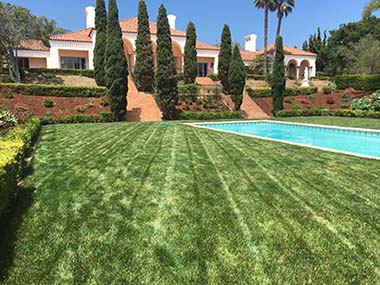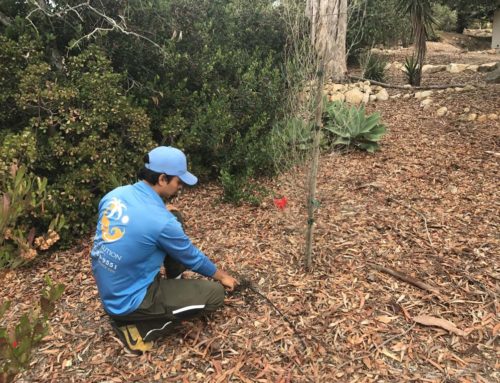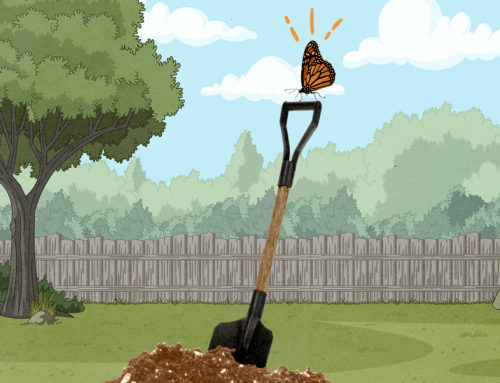The Tenets of Good Lawn Care
When it comes to pondering the level of maintenance a home landscape might require, it’s common to favor lawn over large garden beds. The thinking, of course, is that lawns are easy, just needing mowing and maybe watering in between rain showers. But the truth is, lawns need a broader program of care
Mowing. Everyone knows lawns require mowing. And most of us are pretty good at gauging when to carry out this chore. But there are some additional considerations that can make even the DIY homeowner’s mowing efforts provide optimal results.
- Mow high when it’s dry. Keep lawns no more than about 3 1/2” high and no less than 1 1/2” in height. This ensures that the blades of grass are providing the roots and more sensitive lower portions enough protection from sunlight. It helps retain moisture too. Set your mower at an appropriate height. Too high might not accomplish the cutting you need, but too low and you can really do some damage.
- Change it up. Switch your pattern each time you mow. This promotes more upright growth which is better for encouraging stronger grass roots. This is where you can bring out your creative side, too. Diagonal patterns look more professional, or you can try the logo of your favorite sports team!
- Rain, rain, go away. Don’t mow when it’s wet. The clippings tend to clump up and can really clog your mower. And whatever clumps make it back to the ground will sit and smother spots of your lawn if they’re left unraked. It’s better to just wait for the next dry day to mow.
What is a landscape maintenance program?
The natural environment is ever changing, always growing and regularly impacted by weather and climactic conditions. Regular maintenance under the eyes and care of a professional will keep your landscape looking trim and neat no matter what …
Watering. Often the first indicator of droughty weather is an unhappy looking lawn. A good watering program is necessary for maintaining the look and health of your turf.
- Top o’ the morning. Watering first thing in the morning gives it time to percolate down into the grass without evaporating too quickly in the sun’s heat or producing mold as it sits overnight.
- Short and frequent. It may be tempting to water longer in the hotter months, but, in sandy soils especially, the excess water can be wasted to percolation or evaporation, without much benefit to the lawn’s roots. For soils with a slower percolation rate, excess water may breed mold or unwanted vegetation such as dollar weed. In summer months, increase the frequency of watering instead of the time.
Weed and feed. Lawns sometimes need a little help. Learn how to do it without hurting your turfgrass.
- Too much of a good thing. For as many great products as there are on the shelves at your local garden center, it’s possible to really overdo their use. Assuming that a lawn that has weeds just needs more weed treatment or a lawn that looks sparse needs more fertilizer is misguided and can make things worse. These products work best when their instructions are followed to the letter. Overuse can stress a lawn which only makes way for more weeds. Also, if a lawn is looking sparse, investigate whether something else is causing the problem, such as grubs or another invasive insect.
- Put holes in it. Lawns need air. Aerating annually encourages airflow and reduces thatch that can block the percolation of water and stifle roots.
While lawn care doesn’t have to be stressful or confusing, a lot of homeowners prefer to leave it in the hands of professionals. Consider hiring a landscape expert who can prescribe a slate of services for your lawn, leaving the time you spend with your lawn for playing frisbee or stretching out with a good book.







Leave A Comment
You must be logged in to post a comment.